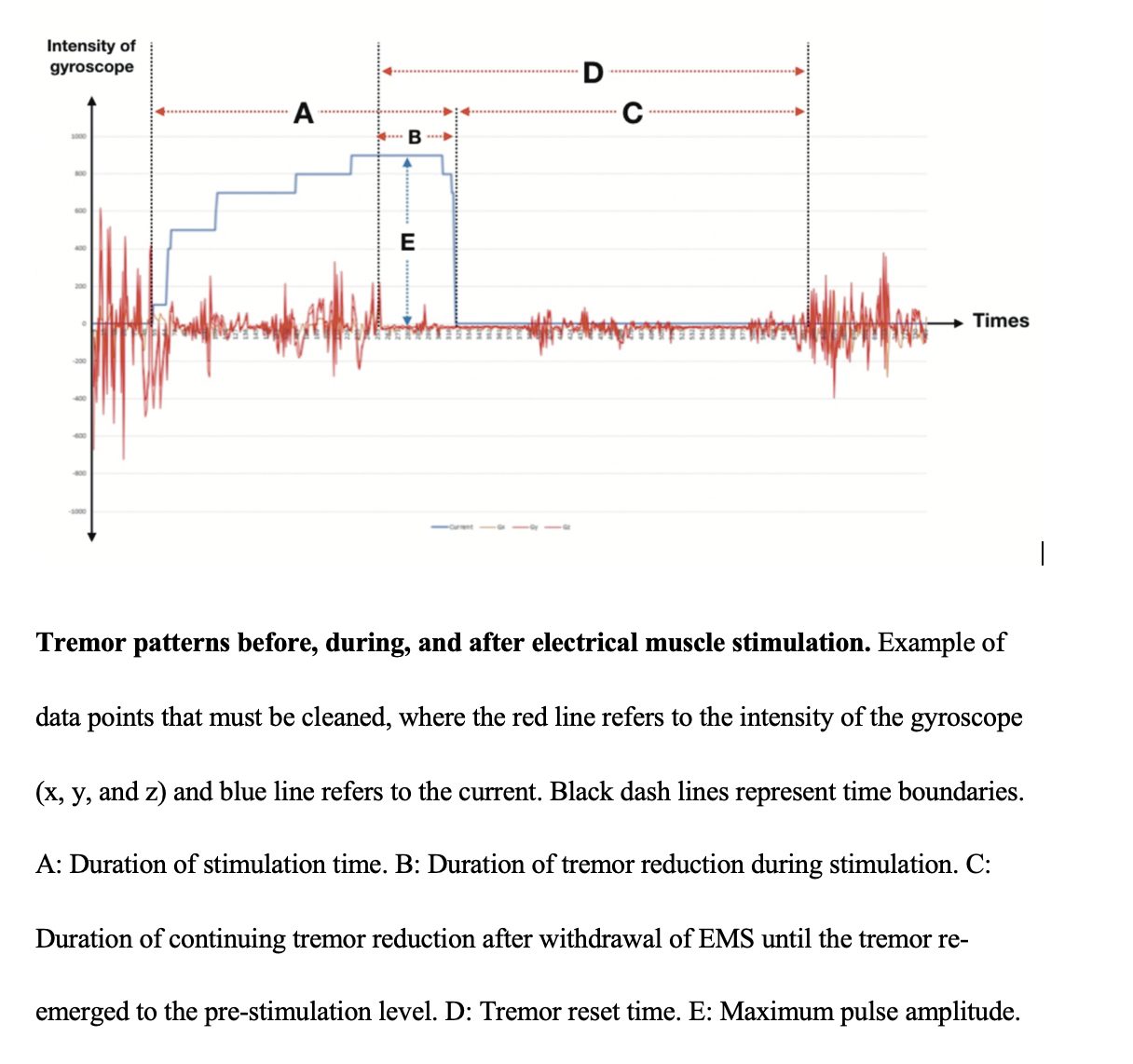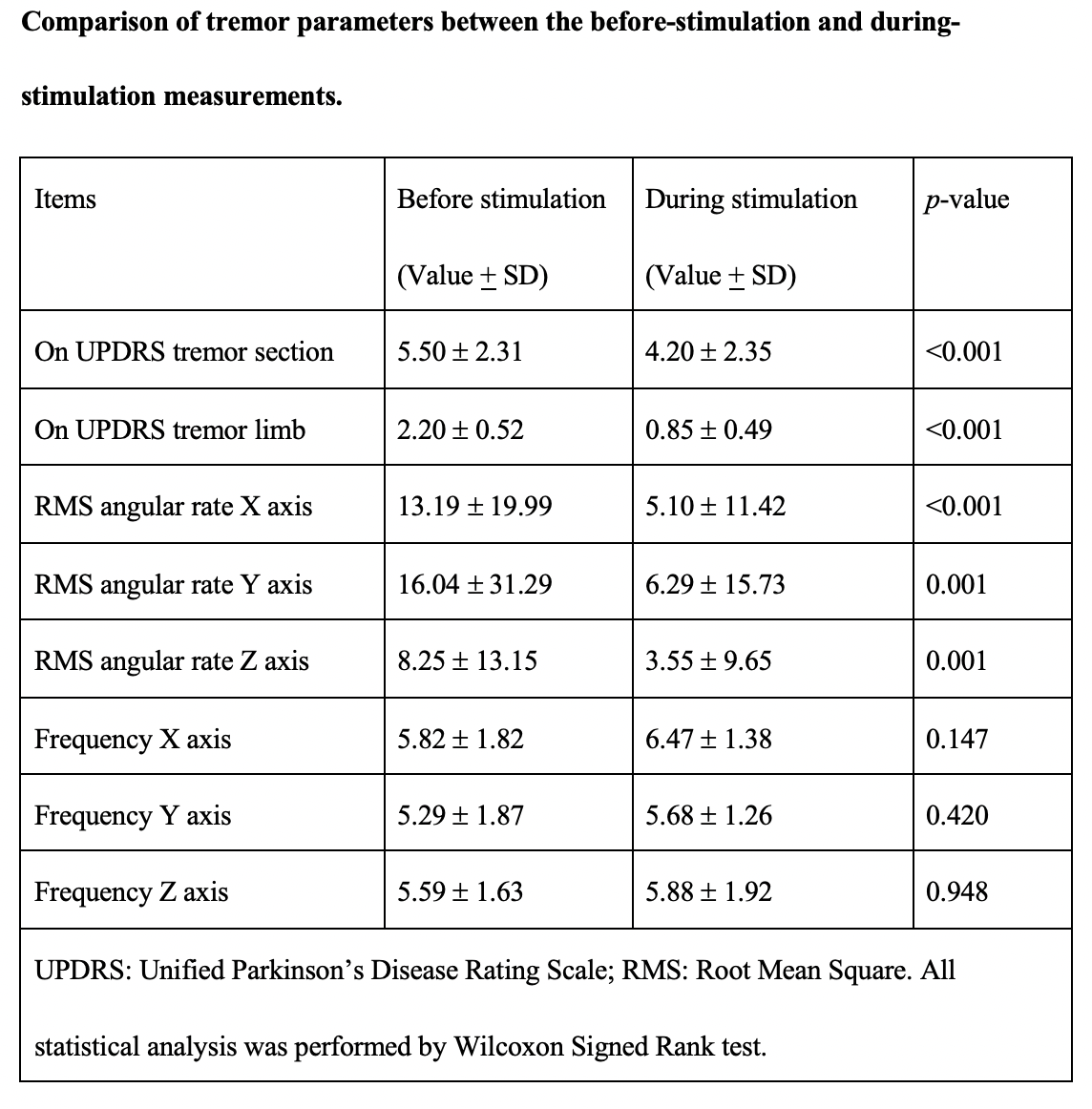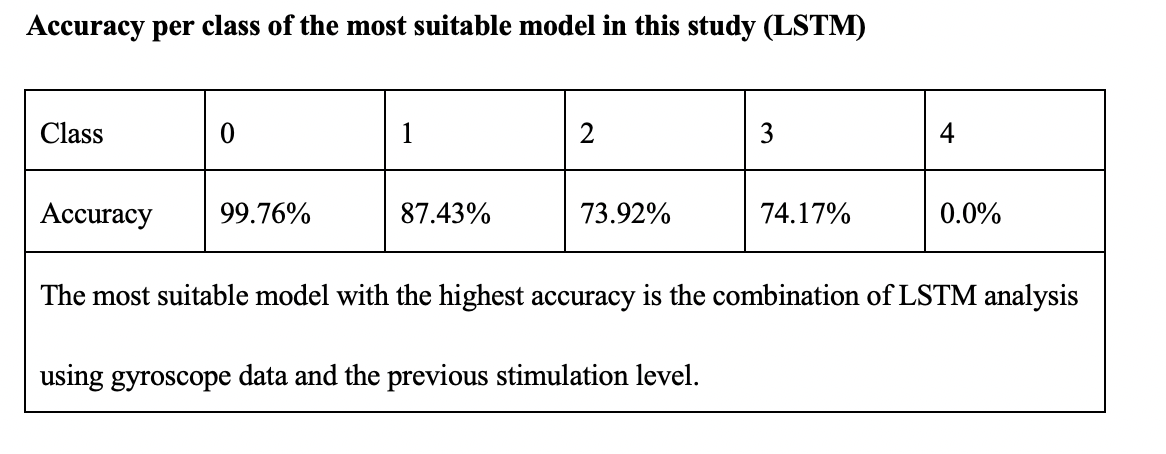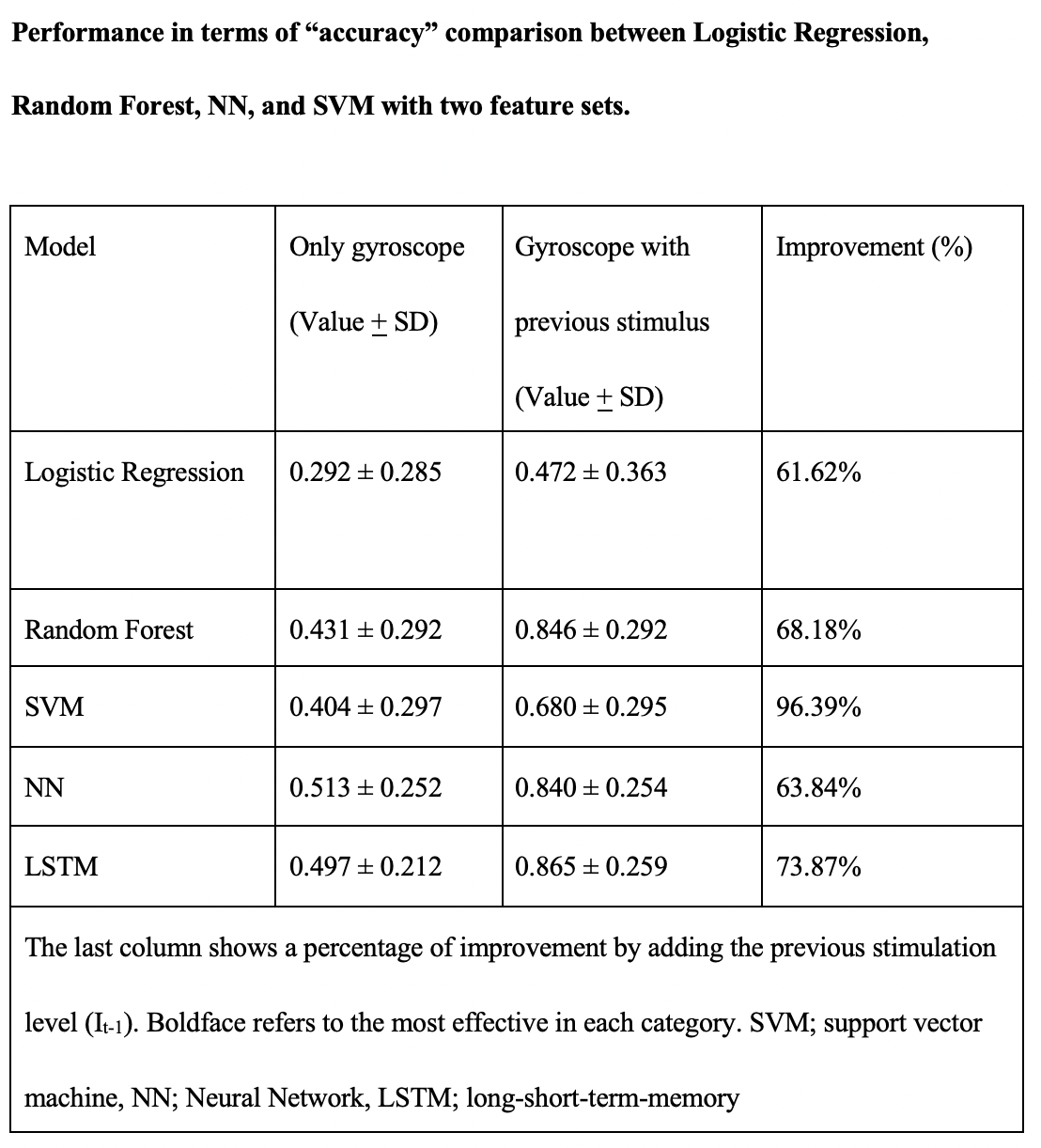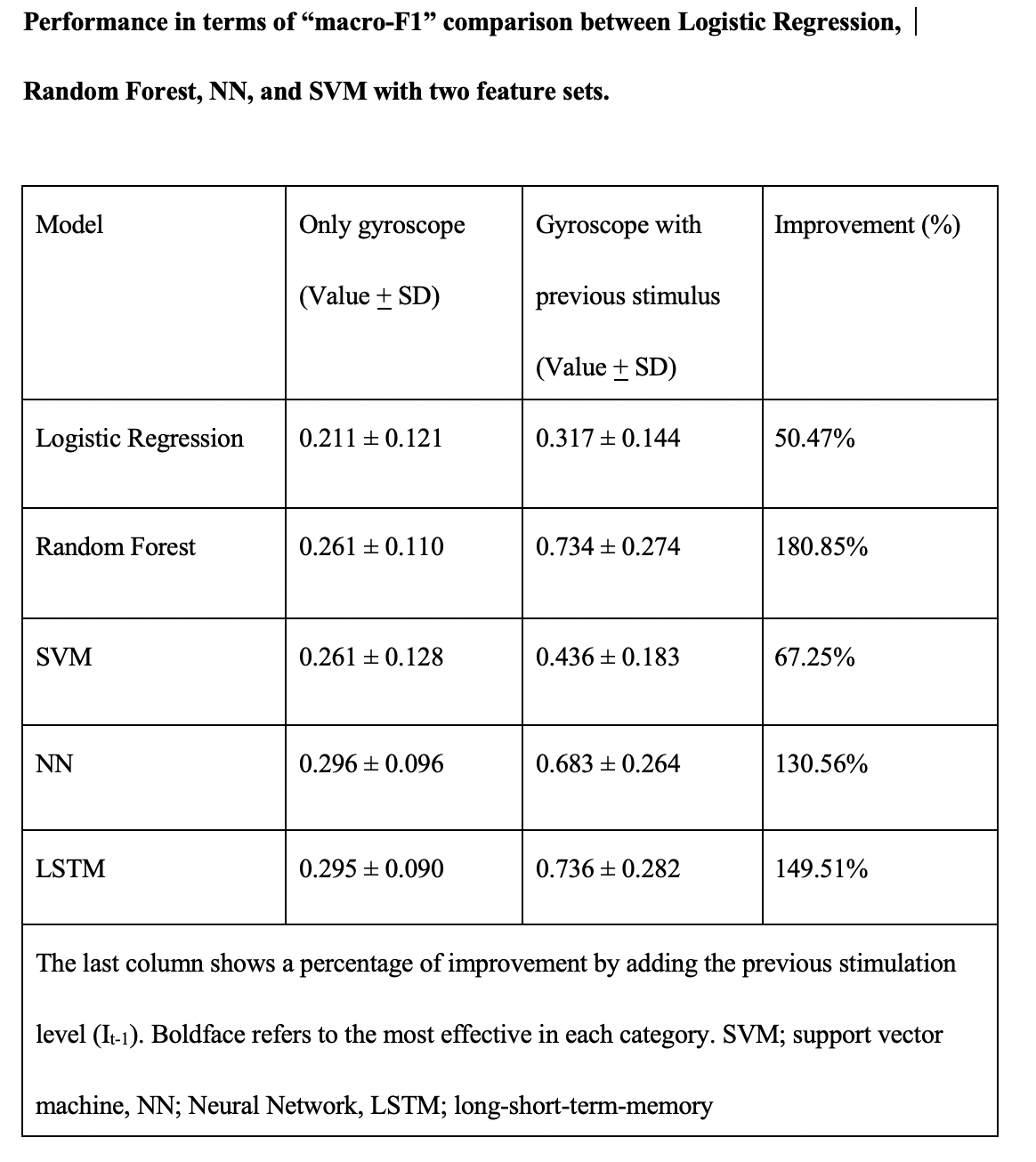Category: Technology
Objective: This study explores the effect of electrical muscle stimulation (EMS) on resting tremor and aims to identify the best machine learning model to predict parameters that will yield the longest duration of tremor reduction.
Background: Recent studies have identified that peripheral stimulation in Parkinson’s disease (PD) is effective in tremor reduction, indicating that a peripheral feedback loop plays an important role in the tremor reset mechanism.
Method: We used a Parkinson’s glove to evaluate, stimulate, and quantify the tremors of PD patients. This adjustable glove incorporates two sensor-based analytic modules for the analysis of tremors and provides an on-demand EMS to suppress tremors. Machine learning models were applied to identify suitable stimulation levels (five classes) that led to the longest duration of tremor suppression.
Results: In total, 20 tremor-dominant PD patients were recruited. After applying a maximum pulse amplitude of 9.45 (SD 4.3) mA and stimulation period of 440.7 (SD 560.82) seconds, the total time of tremor reduction, or tremor reset time, was 329.90 (SD 326.85) seconds. A significant reduction in tremor parameters during stimulation was demonstrated by a reduction of Unified Parkinson’s Disease Rating Scale (UPDRS) scores, and objectively, with a reduction of gyroscopic data (p < 0.05, each). None of the subjects reported any serious adverse events. We also compared gyroscopic features with five machine learning techniques: Logistic Regression, Random Forest, Support Vector Machine (SVM), Neural Network (NN) and Long-Short-Term-Memory (LSTM). The machine learning model that gave the highest accuracy was LSTM, which obtained: accuracy = 0.865 and macro-F1 = 0.736.
Conclusion: This study confirms the efficacy of EMS in the reduction of resting tremors in PD. LSTM was identified as the most effective model for predicting parameters that would elicit the longest duration of tremor reset time with the least amount of current for stimulation. Our study provides further insight on the tremor reset mechanism in PD.
References: 1. Jitkritsadakul O, Thanawattano C, Anan C, Bhidayasiri R: Exploring the effect of electrical muscle stimulation as a novel treatment of intractable tremor in Parkinson’s disease. J Neurol Sci 2015, 358(1-2):146-152. 2. Jitkritsadakul O, Thanawattano C, Anan C, Bhidayasiri R: Tremor’s glove-an innovative electrical muscle stimulation therapy for intractable tremor in Parkinson’s disease: A randomized sham-controlled trial. J Neurol Sci 2017, 381:331-340. 3. Yao L, Brown P, Shoaran M: Resting Tremor Detection in Parkinson’s Disease with Machine Learning and Kalman Filtering. IEEE Biomed Circuits Syst Conf 2019, 2018.
To cite this abstract in AMA style:
O. Phokaewvarangkul, P. Vateekul, I. Wichakam, C. Anan, R. Bhidayasiri. Using Machine Learning to Predict the Best Outcomes with Electrical Muscle Stimulation for Tremors in Parkinson’s Disease [abstract]. Mov Disord. 2021; 36 (suppl 1). https://www.mdsabstracts.org/abstract/using-machine-learning-to-predict-the-best-outcomes-with-electrical-muscle-stimulation-for-tremors-in-parkinsons-disease/. Accessed April 26, 2025.« Back to MDS Virtual Congress 2021
MDS Abstracts - https://www.mdsabstracts.org/abstract/using-machine-learning-to-predict-the-best-outcomes-with-electrical-muscle-stimulation-for-tremors-in-parkinsons-disease/

